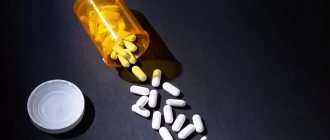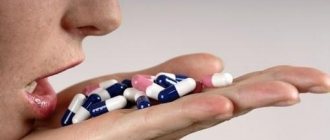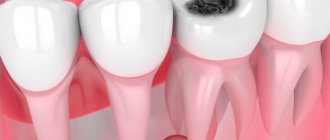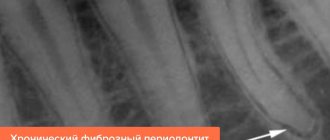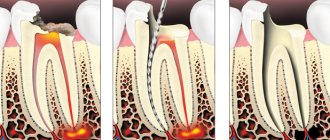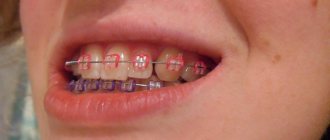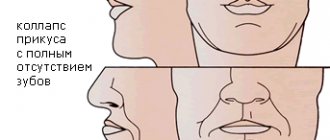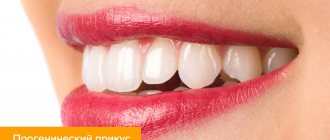Painkillers and NSAIDs (non-steroidal anti-inflammatory drugs) can in most cases be found in the medicine cabinet in every home. This is a very common drug group. Medicines are taken to reduce fever, relieve pain, and eliminate other discomfort and symptoms.
Do they pose a danger to the human body?
«Everything is medicine and everything is poison - it's all a matter of dose».
Paracelsus
The danger of overdosing on painkillers
In some cases, when indicated, doctors prescribe opioid treatment to patients.
These are very dangerous drugs that cause drug addiction quite quickly. All you have to do is not follow the doctor’s prescription, increase the period of use and dosage specified in the instructions or allowed by the doctor, and the dependence on the pills is in your pocket.
Opioids have great analgesic activity, so their abuse can easily lead to severe poisoning and even death.
- You can't convince me to get treatment
? - We will help you with motivation for treatment. As a rule, it is difficult for loved ones to persuade or force an addict to undergo treatment. World experts have developed EFFECTIVE motivation schemes, using which you can lead an addict to the decision to seek help. 8
Mechanism of action of painkillers
When tissue damage or inflammation occurs, a signal travels along the nerve endings to the brain. In the damaged area, irritation of the nerve endings occurs. As a result of muscle contraction, a spasm occurs.
Painkillers act as follows:
- inhibit nerve impulses that transmit pain;
- soothe irritated nerve endings;
- relieve muscle spasms.
Depending on the type of pain, painkillers are used.
Causes of poisoning
More than 12% of drug poisoning and overdose cases involve NSAIDs. Non-opioid analgesics are widely available and can be purchased at any pharmacy, as they are vital supplies. However, it is impossible to buy narcotic painkillers without a prescription. Their free distribution without a prescription is punishable by law. Painkillers often contain codeine, which is sought after by drug addicts.
Why does poisoning occur with painkillers:
- failure to comply with instructions or doctor's prescription;
- incorrect reception;
- doctor's error;
- increasing dosage;
- lack of knowledge about taking medication;
- low body resistance;
- combination with alcohol, drugs, other drugs;
- cumulative effect due to prolongation of the course of treatment;
- taking the drug for recreational purposes;
- intake during pregnancy;
- when attempting suicide.
Among the most dangerous non-steroidal anti-inflammatory drugs is phenacetin, previously contained in such drugs as Sedalgin and Askofen. This analgesic quite often caused the development of allergic reactions and disruption of internal organs. Today, a substance used as an antipyretic, paracetamol, is used to a greater extent in medicine.
If the patient takes the medicine as prescribed and prescribed by the doctor, an overdose of analgesics and local anesthetics occurs quite rarely. However, most often an overdose of anesthetics is used by drug addicts to achieve euphoria. Pharmacy drugs have long become a source of cheap “high” for them.
Nurofen Forte
This pain reliever is the best in its category. Nurofen Forte tablets help with muscle, headache, toothache and joint pain. The drug has very few contraindications due to the content of a small amount of active ingredients. Nurofen Forte is easy to use and has virtually no side effects. Tablets are prescribed from the age of 12; you can take the drug three times a day, one tablet (at equal intervals of 6 hours). You can be treated with Nurofen Forte for no longer than two to three days, then you need to take a week break. Tablets have a wide spectrum of action.
Nurofen Forte
Reckitt Benckiser Healthcare International Ltd, UK
NSAIDs to eliminate: Headache;
migraine; toothache; algodismenorrhea; neuralgia; backache; myalgia; rheumatic pains; fever with influenza and ARVI. from 9
5.0 1 review
584
- Like
- Write a review
Overdose symptoms
Symptoms of an overdose of painkillers and NSAIDs depend on the individual characteristics of the human body, the drug taken and its dosage. In some cases, a person may become ill even after taking a therapeutic dose. Therefore, in order to prevent poisoning from local anesthetics and narcotic analgesics, it is necessary to strictly follow the instructions, which necessarily indicate the maximum daily dosages.
Acute poisoning with narcotic analgesics
Painkillers have different effects on the body, so the dose that can lead to intoxication is different.
Signs of poisoning:
- dizzy;
- be sick;
- vomiting occurs;
- It's difficult to breathe;
- weakness, drowsiness;
- increased sweating;
- loss of consciousness;
- pallor, cyanosis;
- the temperature drops;
- constipation, upset stomach;
- weakening of the pulse;
- swelling;
- pressure drop;
- convulsions, tremors.
Among the first signs: lethargy, drowsiness, lethargy, breathing problems. The condition is deteriorating quite quickly. Common complications that arise from an overdose of anesthetic: cerebral edema, pulmonary edema, cardiac arrest, renal failure. A severe overdose of local anesthetics manifests itself in paralysis of the respiratory center. If you do not call an ambulance in time, the risk of death is close to 75%.
Free phone number for a narcologist in Moscow and throughout Russia: 8 (800) 333-20-07. .
It is important to understand that a person who is poisoned by pills can fall into a coma. Even after emerging from this state, irreversible health consequences are possible: mental disorders, dysfunction of certain internal organs.
For recreational purposes, addicts often overdose on painkillers such as Tempalgin or Nurofen to achieve euphoria. Often, to enhance the effect, pharmaceutical drugs are mixed with alcohol and barbiturates, which significantly increases the intoxication of the body and increases the risk of death.
Do you want to know about the cost of services?
8 call our specialist
Non-narcotic analgesics
Non-opioid and non-steroidal anti-inflammatory drugs in pharmacology include drugs that do not have narcotic potential and are not used by drug addicts. These medications are used as anti-inflammatory, antipyretic, painkillers, etc. Regarding doses, for example, if the daily dose, according to the instructions, is 4 grams, then death can occur even after consuming 15-20 g.
Symptoms of Paracetamol overdose:
- liver dysfunction (the medicine is a dangerous toxin for the liver, causes bleeding disorders, hepatitis);
- disruption of the gastrointestinal tract (stomach pain, nausea, vomiting);
- damage to the central nervous system (drowsiness, weakness, lethargy);
- metabolic disorder;
- low pressure;
- renal failure (nephritis and other kidney diseases);
- disruption of the cardiovascular system due to general intoxication;
- encephalopathy.
Acute poisoning can last for 10-12 hours. You can also be poisoned by the drug if you use it for a long time in an increased dosage, as it accumulates in the tissues of the internal organs. Paracetamol is part of many modern drugs sold in pharmacies, including Spazmolex and Pentalgin. These are dangerous pharmaceutical drugs that addicts use to get a “high.” Often such substances are used for the purpose of suicide attempts.
Anonymous 24 hours a day Activity is licensed Patient accompaniment
Full range of narcology services:
- tests
- drug testing
- detox
- encoding
- psychiatry
- binder
- withdrawal symptoms
8+7
Salicylic acid and salicylates
It is quite easy to get poisoned by this common drug among people; it is enough to consume 10-40 g. The dosage of tablets is individual and depends on the condition of the patient’s body. Death is possible in 2% of cases.
Signs of salicylate poisoning:
- your head is spinning, your ears are ringing, your consciousness is confused;
- headache;
- hallucinations, hearing loss;
- chills, cramps;
- euphoric sensations;
- pain in the abdomen, under the ribs, heartburn;
- nausea, vomiting, upset stomach;
- violation of movement coordination;
- excited state;
- deterioration of cognitive functions;
- disruption of the functioning of the heart and blood vessels, internal organs;
- arrhythmia and tachycardia;
- increased fatigue;
- breathing problems, shortness of breath.
When using salicylic acid, for example, Aspirin in large quantities, internal bleeding may occur.
How to give an intramuscular injection correctly
When choosing a place to administer an injection, the following places are searched:
- where injections have already been given (there are seals there);
- hemangiomas;
- moles;
- prominent capillaries.
It is prohibited to inject into such places.
To make an intramuscular injection without harming yourself, you need to perform the following manipulations.
- Wash your hands with laundry or any other soap. This is important because your hands, and especially the area under your nails, are where the most germs accumulate. Girls who have long manicured nails need to wash the area under them with a special brush.
- Prepare three cotton pads.
- Moisten the first cotton pad with an antiseptic and wipe your hands as thoroughly as possible.
- Take out the package containing the syringe. Open it. Be careful not to touch the needle during assembly.
- Take an ampoule with injection solution. Using a second cotton pad, which is also moistened with an antiseptic, take the top of the ampoule and break it. You can do it differently - if you have a special file in the kit, use it to file down the top of the ampoule.
- Remove the assembled syringe from the package. Remove the cap from the needle. Insert the needle into the ampoule itself (you must try not to touch the walls and bottom). In this way, draw up the medicine, and then get rid of the air inside the syringe by gently pressing the piston.
- Take a third cotton pad. They need to clean the area where the injection will be given. The place can be marked in advance with iodine - this will make it easier to get where you need to go.
- The hand needs to be pulled back, but not much. Then the injection is given.
- At the end of the procedure, remove the needle from the injection site. Then take a cotton pad and press it harder to the needle insertion site. Hold for a minute.
Each time you need to change the injection site to avoid the formation of seals. It is recommended to paint the mesh with iodine - this way you can achieve disinfection and warm up the area.
It is worth noting a separate case in this instruction. If the medicine is in powder form, one additional step is required. In addition to the fact that the ampoule with the solution needs to be opened, the protective foil removed, and the cap disinfected, you need to add the medicine in powder form to the liquid and mix until smooth. Only after this can the resulting drug be injected into the syringe. Then proceed in accordance with the instructions.
Emergency help
The consequences of an overdose of painkillers and drug poisoning are quite serious; without timely emergency medical care, a person can die. If you know that a loved one has taken too many medications, is using pharmaceutical drugs, and you see that he is turning pale and looks sick, you should immediately call a narcologist from the Center for Healthy Youth to your home. Delay in this case can cost your life. Of course, specialists at home will do everything possible to help the victim, but it is necessary to hospitalize him in a hospital for examination, intensive care and resuscitation.
Overdose of painkillers - what to do?
- Call our drug treatment center.
- Make sure the victim is conscious.
- Find out which particular drug caused the intoxication of the body.
- Try to determine the approximate dose.
- Lay the victim on his side and ensure that he does not choke on vomit.
- Provide fresh air, ventilate the room, remove clothing that may block breathing.
- Monitor your blood pressure, pulse and breathing.
- In case of mild or moderate poisoning, it is necessary to rinse the stomach, give the person activated charcoal or an enterosorbent known to you.
- If a person is not breathing or has no pulse, cardiopulmonary resuscitation is necessary.
If a person’s condition is serious, doctors at the drug treatment clinic begin to provide assistance on the way to the hospital. Naloxone is most often used for poisoning with narcotic analgesics. It is an opioid receptor antagonist, an antidote, which is widely used in modern narcology. It is used when coding alcoholism and drug addiction to reduce cravings for chemicals.
If the victim has trouble breathing, he may need a ventilator. Doctors prescribe treatment based on tests, examinations, examinations and diagnostics. It is important to understand that therapy is always individual and depends on existing indications and contraindications.
Ibuprofen
The active ingredient in these pain pills is ibuprofen, and its low concentration in the drug is excellent for treating pain in those who cannot afford an expensive drug. But the cheapness of Ibuprofen does not mean that it is ineffective. On the contrary, the tablets relieve pain well and begin to act as quickly as possible. Other advantages include minimal likelihood of overdose and ease of use. Ibuprofen is prohibited for children under 6 years of age. It is advisable to take the medicine after consulting a doctor in order to take into account all possible contraindications.
Ibuprofen
OJSC Pharmstandard-Leksredstva, Russia; Slavyanskaya Pharmacy, Russia; Rafarma, Russia; CJSC VERTEX, Russia; PJSC "Biokhimik", Russia; EKOlab, Russia; "Moskhimfarmpreparaty" named after. N. A. Semashko, Russia; Belmedpreparaty, Belarus; PJSC "Biosintez", Russia; Borisov medical plant drugs, Belarus; Sintez OJSC, Russia; JSC "Tatkhimfarmpreparaty", Russia; Novopharm-Biosintez LLC, Ukraine
Symptomatic treatment: - tension headaches and migraines;
- joint, muscle pain, - pain in the back, lower back, radiculitis; - pain when ligaments are damaged; - toothache; - painful menstruation; — febrile conditions during colds, flu; - rheumatoid arthritis, osteoarthritis. NSAIDs are intended for symptomatic therapy, reducing pain and inflammation at the time of use, but do not affect the progression of the disease. from 16
4.5 2 reviews
1529
- Like
- Write a review
Safiston
These tablets are prescribed for mild and moderate dental pain, headaches, migraines, arthralgia, myalgia, pain during menstruation, as well as in the complex therapy of acute respiratory viral infections and influenza. Safiston contains paracetamol, caffeine and propyphenazone. The drug is suitable for adults and children over 12 years of age. You should take no more than 3 tablets of painkiller per day (an hour or two after meals). Safiston should not be taken for more than five days without medical supervision. The drug relieves pain and reduces temperature an hour after administration, and its positive effect lasts about 6 hours. If you exceed the dosage of the drug, skin rash, nausea and vomiting, dizziness, and sleep disturbances are possible. Contraindications to taking these pain pills include pregnancy and breastfeeding, cardiovascular diseases, gastrointestinal, liver and kidney diseases. “Safiston” perfectly relieves pain, the effect of taking the drug lasts a long time, long-term use of the drug is possible (after consultation with a doctor), even teenagers can take it (after studying the list of contraindications), affordable cost. Cons – contraindications, which you should definitely read in the instructions.
Pentalgin
These painkillers are inexpensive and are usually prescribed for headaches, dental pain, muscle pain, joint pain, and other types of pain. The drug helps with radiculitis and menstrual pain. The tablets begin to act 20 minutes after administration, and the analgesic effect lasts 4-6 hours. Pentalgin has very few contraindications; patients over 18 years of age can take it (usually one tablet three times a day). If you exceed the recommended dosage, side effects may develop, and if you reduce it, the effectiveness of the drug will also decrease. In general, Pentalgin is as safe as possible, provides excellent pain relief, and is affordable.
Pentalgin
OJSC Pharmstandard-Leksredstva, Russia
— pain syndrome of various origins, incl.
pain in joints, muscles, radiculitis, algodismenorrhea, neuralgia, toothache, headache (including those caused by cerebral vasospasm); — pain syndrome associated with spasm of smooth muscles, incl. for chronic cholecystitis, cholelithiasis, postcholecystectomy syndrome, renal colic; — post-traumatic and postoperative pain syndrome, incl. accompanied by inflammation; - colds accompanied by febrile syndrome (as symptomatic therapy). from 57
901
- Like
- Write a review
Solpadeine Fast
These painkillers act quickly, are as safe and effective as possible, and are suitable for relieving various types of pain. Solpadeine Fast contains paracetamol and caffeine. The drug is prescribed for headaches, toothaches, migraines, neuralgia, rheumatic and muscle pain, painful periods, as well as in the complex treatment of ARVI and influenza. These soluble tablets are easily absorbed and provide an immediate positive effect. The drug is prohibited for children under 12 years of age, as well as persons with hypertension, hypersensitivity to the components of Solpadeina Fast, and people with renal and liver failure. This painkiller has minimal contraindications, a quick effect, but is overpriced.
Solpadeine Fast
GlaxoSmithKline, France
- headache;
- migraine; - toothache; - neuralgia; - muscle and rheumatic pain; - painful menstruation; - a sore throat; - to reduce elevated body temperature and symptomatic treatment of colds and flu. from 77
5.0 1 review
162
- Like
- Write a review
Spasmonet
This anesthetic drug relieves spasms of the smooth muscles of internal organs and reduces pain during spasms of peripheral arteries. "Spasmonet" has a balanced composition: one main active ingredient and several minor ones. Thanks to the right combination of active ingredients, these pain relief pills are very effective and start working quickly. When taking Spazmonet, any side effects very rarely occur, but if you do not adhere to the recommended dosage, dizziness, nausea, allergies, and decreased blood pressure may occur.
Spasmonet
KRKA-RUS, Russia; KRKA (KRKA), Slovenia
Spasmonet is a drug from the group of antispasmodics that are used in the treatment of gastrointestinal disorders, as well as in gynecology.
from 56
5.0 1 review
444
- Like
- Write a review
When buying pain pills, pay attention to the manufacturer’s reputability
Photos from open sources
Drotaverine
Perhaps one of the most inexpensive and effective antispasmodics prescribed for pain in the gastrointestinal tract and spasms of the smooth muscles of internal organs. "Drotaverine" has very few contraindications: childhood, intolerance to the drug components, severe liver and kidney failure. Drotaverine contains a low concentration of the active substance, so the risk of side effects is practically eliminated. Due to its low cost, this painkiller is available to everyone. Among the disadvantages is that sometimes Drotaverine is difficult to find in pharmacies.
Drotaverine
Planet Organics; Borisov medical plant drugs, Belarus; NPC Pharmzashchita, Russia; PJSC "Biosintez", Russia; Ozon LLC, Russia; FSUE "Armavir Biofactory", Russia; PJSC "Biokhimik", Russia; Deco, Russia; JSC Dalkhimfarm, Russia; Novosibkhimpharm OJSC, Russia; Vifitech/Vilar, Russia; Update, Russia; Sintez OJSC, Russia; JSC PharmProject, Russia; PJSC Valenta Pharm, Russia; "Moskhimfarmpreparaty" named after. N. A. Semashko, Russia; JLLC "Lekpharm", Belarus; Medisorb, Russia; Obolensk pharmaceutical enterprise, Russia; Solopharm, Grotex LLC, Russia; Ellara MC, Russia
Spasm of smooth muscles of the urinary and biliary organs (renal colic, pyelitis, tenesmus, biliary colic, intestinal colic, dyskinesia of the biliary tract and gallbladder of the hyperkinetic type, cholecystitis, postcholecystectomy syndrome).
Spasm of smooth muscles of the gastrointestinal tract (usually as part of combination therapy): pylorospasm, gastroduodenitis, gastric and duodenal ulcers, spastic constipation, spastic colitis, proctitis. Tensor headache. Dysmenorrhea, threatened miscarriage, threatened premature birth, postpartum contractions. When conducting some instrumental studies, cholecystography. from 12
5.0 1 review
915
- Like
- Write a review
No-Shpa
Typically, “No-Shpu” is prescribed for spasms of smooth muscles of the gastrointestinal tract, spasms of the biliary and urinary tracts, headaches, and painful menstruation. This drug for pain is one of the most popular because it is inexpensive, most effective and quickly begins to act. In addition, No-Shpa has few contraindications and the risk of overdose. "No-Shpa" contains six components that are safe for health, which very rarely cause side effects. Painkillers are prescribed for adults and children over 6 years of age.
No-shpa
Chinoin, Hungary
Antispasmodic drug used for: Spasms of smooth muscles in diseases of the biliary tract: cholecystolithiasis, cholangiolithiasis, cholecystitis, pericholecystitis, cholangitis, papillitis;
- spasms of smooth muscles of the urinary tract: nephrolithiasis, urethrolithiasis, pyelitis, cystitis, bladder spasms. As an auxiliary therapy: - for spasms of smooth muscles of the gastrointestinal tract: peptic ulcer of the stomach and duodenum, gastritis, spasms of the cardia and pylorus, enteritis, colitis, spastic colitis with constipation and irritable bowel syndrome with flatulence; - for tension headaches; - for dysmenorrhea (menstrual pain). from 50
4.5 2 reviews
1640
- Like
- Write a review
